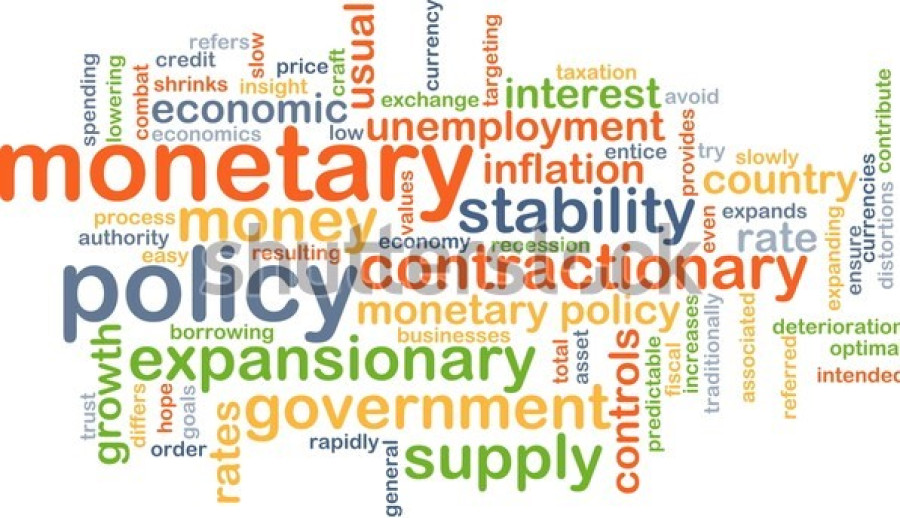Money
Bankers term the monetary policy accommodative as it relaxes rules on loan provisioning
They, however, say meeting the increased lending thresholds for agriculture, hydro and small and medium enterprises could be challenging.
Prithvi Man Shrestha
The banking sector has termed the monetary policy for the fiscal year 2020-21 as ‘balanced’, for it has introduced a rescue package for those businesses affected by the Covid-19 pandemic while also making sure that profitability of banks are not hurt.
In its fiscal policy, which was unveiled on Friday, the central bank has extended the deadline for paying loan instalments by up to one year. It has also relaxed the bank provisioning rules.
Provisioning is a practice where banks are required to maintain a certain amount in reserve when loans are not recovered. This reserve amount cannot be counted as profit.
With the increment of core capital plus credit to deposit (CCD) ratio to 85 percent from 80 percent, the central bank has allowed banks to mobilise more resources.
It has also encouraged mergers among banks and financial institutions by introducing various incentives.
The threshold of minimum lending for agriculture, hydropower and micro, small and medium enterprises have also been increased.
People in the banking sector have welcomed the policy even though meeting some of the requirements could be challenging.
“The monetary policy has sought to address the concerns of all stakeholders,” said Anil Shah, CEO of Nabil Bank. “For the banking sector, it has sought the stability of the balance sheet instead of profitability at the moment.”
As part of providing relief, the monetary policy has extended the deadline for paying loan instalments by six months, nine months and one year, depending on the degree of the pandemic’s impact on a particular sector.
As per the monetary policy, a credit which had remained good until mid-January this year could be counted as good credit till mid-July. Even if an instalment is not paid by mid-July, banks and financial institutions make provisioning of just 5 percent of such loans.
Likewise, the central bank has suspended countercyclical buffers, a provision where banks need to hold capital at times when credit is growing rapidly; reduced additional risk weight for three types of risks—operational, market and overall risks— to be put as supervision purpose; and made the provision where investment made in private equity and venture capital would not be reduced while counting capital funds.
“Theoretically, reduction of risk weight would increase the risk for banks,” said Bhuvan Dahal, president of Nepal Bankers’ Association. “But the central bank has relaxed the provision to ensure that banks’ profitability is not hurt.”
Ashoke Rana, CEO of Himalayan Bank, said that the monetary policy is guided more by reducing the interest rate for borrowers.
“With adequate availability of loanable funds in the market, interest rates will go down as required for the businesses. Instead of reducing the spread rate, it is an indirect move to reduce the interest which is good,” he said
According to the central bank, around Rs100 billion liquidity will be available in the market with the increment of CCD ratio. Around Rs200 billion additional resources will also be available for banks to lend under the refinance package, which is an increase by nearly fivefold.
Though bankers praised the direct lending requirement in the areas of agriculture, hydropower and micro, small and medium enterprises as a right move, they said that it would be challenging for banks to meet the target.
They are already struggling to meet the existing thresholds.
For example, the current minimum threshold for agriculture lending is 10 percent. However, according to the central bank, banks have lent 9.7 percent of total lending in the agriculture sector.
Likewise, banks are also required to lend 15 percent in the energy and tourism sectors, but their lending stands at 5.3 percent in energy and 4.8 percent in tourism sectors.
“Meeting the target is challenging because there should also be enough customers who want loans,” said Shah of Nabil Bank. “We have to move in an integrated way to create a supply chain that would help the borrowers to get loans easily.”
Shah said that banks could fulfil their lending requirements in the hydropower and agriculture sectors by also buying hydro or agriculture bonds to be issued by other banks, as the central bank has opened this window too.
Former Finance Minister Ram Sharan Mahat said that it would have been better had the central bank also offered certain incentives for banks for increasing lending in these sectors.
“It is challenging for banks to increase lending without considering the demands of the market,” he said.
However, Gunakar Bhatta, spokesperson for the central bank, said that it would not be an issue difficult for banks to increase the lending in these sectors since they have already been issuing loans to a certain level.
“For example, banks also already have around 10 percent lending in micro, small and medium enterprises,” he said.
The monetary policy has also promoted mergers. Instead of adopting a coercive method, the central bank has offered incentives for mergers. The merger policy, Bhatta said, was aimed at encouraging weak banks to go for mergers.
The policy has offered incentives such as reducing cash reserve ratio to certain percentage points, increasing the upper limit of fixed deposit and institutional deposit by a single institution and removing the cooling period for board members and one holding senior management post to join another banking institution.
“I think merger is not an urgency for those banks maintaining corporate governance properly, given the context that it has not been long that paid up capital of banks were increased to Rs8 billion from Rs2 billion,” said Rana of Himalayan Bank. “But, it is good if it encourages the weak banks to go for mergers with stronger banks.”




 13.12°C Kathmandu
13.12°C Kathmandu














